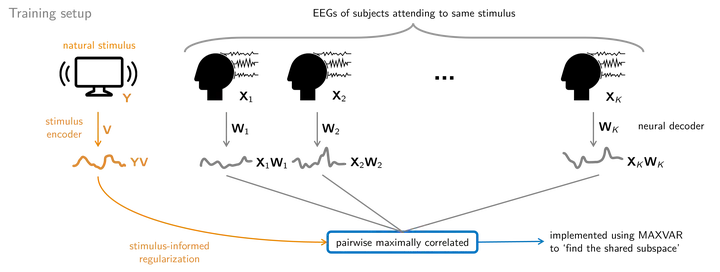Stimulus-Informed Generalized Canonical Correlation Analysis for Group Analysis of Neural Responses to Natural Stimuli

Abstract
Various new brain-computer interface technologies or neuroscience applications require decoding stimulus-following neural responses to natural stimuli such as speech and video from, e.g., electroencephalography (EEG) signals. In this context, generalized canonical correlation analysis (GCCA) is often used as a group analysis technique, which allows the extraction of correlated signal components from the neural activity of multiple subjects attending to the same stimulus. GCCA can be used to improve the signal-to-noise ratio of the stimulus-following neural responses relative to all other irrelevant (non-)neural activity, or to quantify the correlated neural activity across multiple subjects in a group-wise coherence metric. However, the traditional GCCA technique is stimulus-unaware, no information about the stimulus is used to estimate the correlated components from the neural data of several subjects. Therefore, the GCCA technique might fail to extract relevant correlated signal components in practical situations where the amount of information is limited, for example, because of a limited amount of training data or group size. This motivates a new stimulus-informed GCCA (SI-GCCA) framework that allows taking the stimulus into account to extract the correlated components. We show that SI-GCCA outperforms GCCA in various practical settings, for both auditory and visual stimuli. Moreover, we showcase how SI-GCCA can be used to steer the estimation of the components towards the stimulus. As such, SI-GCCA substantially improves upon GCCA for various purposes, ranging from preprocessing to quantifying attention.
This article was a featured article in IEEE Journal on Biomedical and Health Informatics in February 2025.